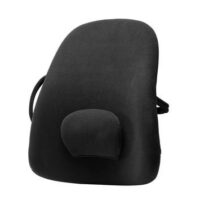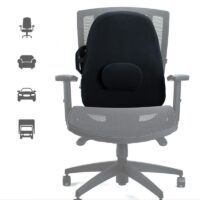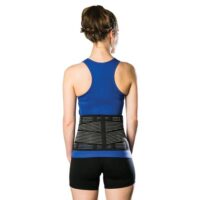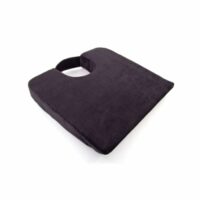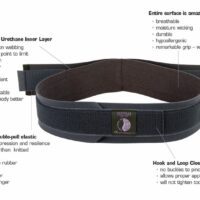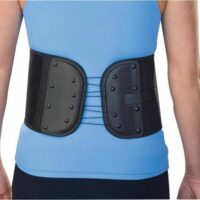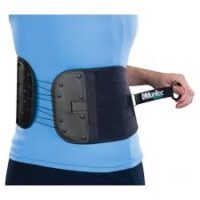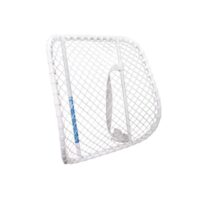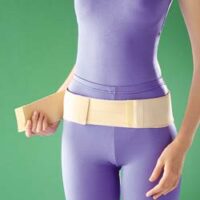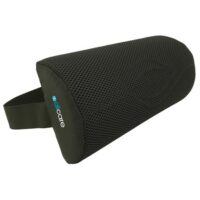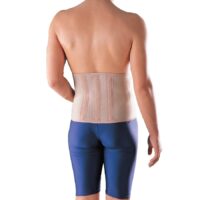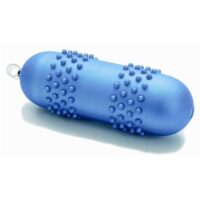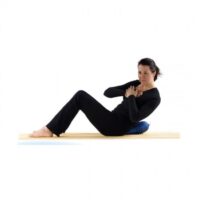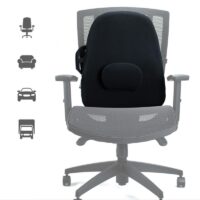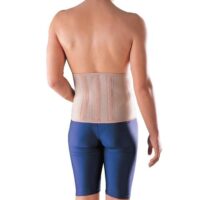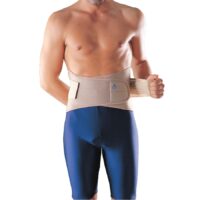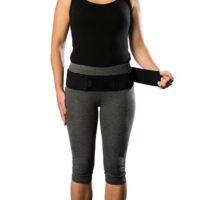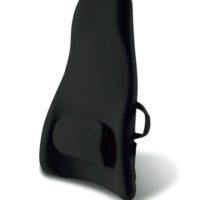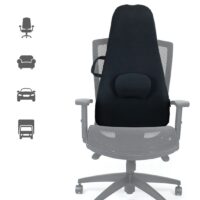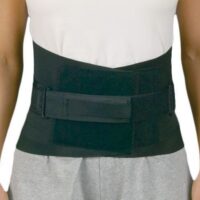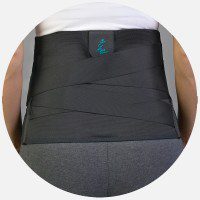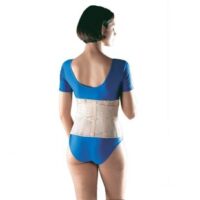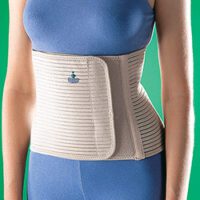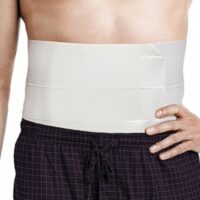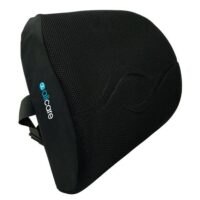Facet Joint Pain
Article by John Miller

Facet Joint Arthropathy
What is Facet Joint Arthropathy?
Facet joint arthropathy is also commonly referred to as facet joint syndrome, facet joint pain, facet joint sprain, but mostly it is a pain caused by a facet joint injury. Facet joints are synovial joints between the vertebrae of your spine. Biomechanically, the function of each pair of facet joints is to guide and limit the movement of that spinal motion segment.
You may also hear facet joint arthropathy described as a zygapophyseal joint syndrome. Your facet joints are also known as zygapophyseal, apophyseal, or Z-joints.
Each section of your spine has facet joints. You may hear them referred to as your cervical facet joint pain (neck), thoracic facet joint pain (mid-back) and lumbar facet joint pain (low back). There are two facet joints (left and right) in each spinal motion segment. Facet joint arthropathy is one of the most common causes of neck pain, back pain and thoracic spine pain.
What Causes Facet Joint Arthropathy?
Facet joint motion can be disturbed by injury. Joint action can stiffen – known as hypomobility. Alternatively, joint movement can become excessive – known as hypermobility. All of these fall within the category of a facet joint arthropathy.
What Causes Facet Joint Hypomobility?
Facet joint hypomobility can be caused by:
- locked facet joint,
- facet joint arthritis,
- degenerative facet joint osteophytes (bone spurs),
- joint capsule scarring, thickening or shortening, or
- protective muscle spasm.
In other words, a facet joint can stiffen due to a slow degeneration or due to uncontrolled motion, which is where your local muscle strength is vital to stabilise and control your facet joints.
What Causes Facet Joint Hypermobility?
Hypermobility is typically traumatic or repeated microtrauma in origin. Traumas may include:
- fracture,
- dislocation,
- overstretched ligaments, or
- a disease that destroys the joints, e.g. Rheumatoid arthritis.
What Causes a Locked Facet Joint?
Simple movements such as a mild twist, awkward movement, or just doing something your body didn’t expect (such as tripping) can lock a facet joint. In most cases, this is due to your facet joints motion exceeding your muscle control.
If you have previously suffered an injury or you have local muscle weakness supporting your facet joints, then it is even easier to repeated lock a facet joint.
What are the Symptoms of a Locked Facet Joint?
Pain is one of the first symptoms a patient will notice with a facet joint injury. A neck facet joint will cause neck pain and potentially shoulder or upper arm pain. Acute cervical facet joint lock can result in an acute wry neck. A back facet joint injury will cause low back pain and potentially pain referred to your buttock or thigh.
When a facet joint locks, you may not be able to move in the direction away from where it’s locked. For example, if the joint is locked in a flexed forward position, you will probably have difficulty arching backwards. The opposite also occurs. In acute phases, muscle spasm will attempt to protect the injured facet joint.
The initial injury can sometimes occur days or occasionally weeks earlier. Your body will attempt to compensate for the locked joint by the neighbouring joints moving more than they usually would. This abnormal movement can often cause pain on the opposite side to the locked facet joint and may potentially lead to other conditions such as sciatica or arm pain. Most commonly, you will notice decreased movement and pain or difficulty stretching.
People who have this problem recurrently are said to have facet joint syndrome. The most common cause of facet joint syndrome is weak stability muscles that are failing to control the movement of your spine.
How is a Facet Joint Arthropathy Diagnosed?
A hands-on examination from a skilled physiotherapist can diagnose facet joint arthropathy.
Using their professional palpation skills, they will confirm the specific facet joint arthropathy and whether it is locked, stiff or unstable. Xrays, MRI’s and CT scan are used to identify arthritic changes and fractures but are unable to detect a locked facet joint. Degenerative changes within the facet joints are commonly called spondylosis.
Please consult your physiotherapist for specific advice regarding your facet joint arthropathy management.
More information
- Cervical Facet Joint Pain (neck)
- Thoracic Facet Joint Pain (mid-back)
- Lumbar Facet Joint Pain (lower back)
Facet Joint Arthropathy Treatment
Specific treatment will vary depending upon your particular facet joint arthropathy. The procedure for a locked facet joint is relatively simple. Your physiotherapist will quickly detect which facet joint is locked. Then proceed to unlock it. Usually, a locked facet can unlock using a painless joint release technique.
The next step is to regain full motion and commence strengthening or other exercises to prevent a future, recurrence. Everyone is slightly different, so your treatment will vary depending on what deficits your physiotherapist has found during your examination.
Unstable Facet Joint Treatment
Unstable or hypermobile facet joints need to be treated entirely differently to a locked facet joint. The fact that the joint already moves excessively would suggest that further joint loosening is unlikely to assist a hypermobile facet joint.
These patients respond better to muscle control and stabilisation program. You physiotherapist will guide you.
Please check with your physiotherapist or doctor for their professional opinion.
Facet Joint Arthropathy Treatment Results?
Physiotherapy will provide the majority of facet joint arthropathy patients with complete relief. (Hu et al. 2006). Locked facet joints will usually start improving immediately post-unlocking. How they progress beyond that, depend on what other concomitant factors are present. How long has the joint been locked? What caused the locking? What adjacent joint motion there is available?
Based on your physiotherapist’s examination, they will be able to provide you with more strict guidelines. Facet joint instability will take longer to rehabilitate since they require time and practice for your muscle strengthening to occur. Once again, please check with your treating physiotherapist for their professional opinion and treatment plan.
Other Treatment Options
Massage
Massage can be an excellent form of muscle spasm relief to allow your facet joint spasm to release.
Acupuncture
Localised acupuncture or dry needling techniques can provide localised muscle spasm and facet pain relief. Ask your physiotherapist for more advice.
Facet Joint Injections
Facet joint injections m confirm a diagnosis and provide short-term (a week or two) relief. Researchers have found that facet joint injections are less effective than patients who exercise in the long-term. (Mayer et al. 2004)
Radiofrequency
Radiofrequency may assist chronic cases which do not respond to physiotherapy treatment. Radiofrequency cauterises the nerve, providing pain relief for a while. The downside is that the pain returns typically when the nerve regrows within a few months.
Summary
Every case of facet joint arthropathy is different. Please check with your physiotherapist for their professional opinion.
Rochedale - Call 38410277
Book Online: RochedaleSalisbury - Call 32751044
Book Online: SalisburySandgate - Call 32691122
Book Online: SandgateWhat Causes Lower Back Pain?
Introduction
Lower back pain is a widespread issue in Australia, stemming from diverse conditions. As physiotherapists, we often encounter various causes of this pain. This guide aims to shed light on these causes and provide valuable insights for effective management.
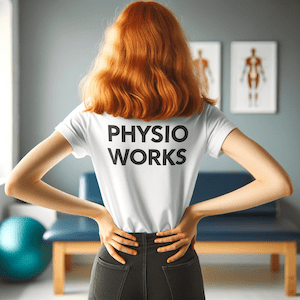

Muscle-Related Injuries
Muscle injuries are a predominant cause of lower back pain, including:
- Back Cramps and Muscle Pain: Typically resulting from overuse or strain.
- Core Stability Deficiency: Weak core muscles can lead to increased back strain.
- DOMS (Delayed Onset Muscle Soreness): Soreness affecting back muscles post-exercise.
Recent research underscores the importance of regular exercise and core strengthening in preventing these injuries.
Bone-Related Injuries
Bone health is crucial in lower back pain, encompassing conditions like:
- Spondylosis: Degenerative spine conditions.
- Spondylolysis or Stress Fracture: Common in athletes, such as cricket bowlers.
- Spondylolisthesis: Occurs when a vertebra slips over another.
- Osteoporosis: Causes bones to weaken, increasing fracture risk. Advancements in bone density scanning have improved early detection and management.
- Scheuermann’s Disease: Affects spinal bone growth in teenagers.
- Scoliosis: An abnormal curvature of the spine causing pain.
- Spinal Stenosis: A narrowing of the spinal canal leading to nerve compression.
Disc-Related Injuries
Spinal discs are vital for spinal health:
- Bulging and Disc Protrusions: These discs protrude or "slip" and can press on nerves.
- Herniated Disc: A more severe form of disc protrusion.
- Degenerative Disc Disease: Age-related disc wear and tear.
Minimally invasive surgical techniques have transformed the treatment of severe disc-related injuries where physiotherapy and other non-operative options fail to improve.
Back Joint Injuries
- Facet Joint Pain: Arises from arthritis or stress on these spinal joints.
Nerve-Related Injuries
Nerve issues can lead to:
- Nerve Pain and Pinched Nerves: Caused by spinal nerve compression from disc bulging or arthritic changes.
- Sciatica: Irritation of the sciatic nerve.
Physiotherapy and newer medications have been effective in managing these conditions. Some will require injection therapies or surgery.
Pelvis-Related Injuries
Pelvic issues also contribute to lower back pain:
- Sacroiliac Joint Pain: Involving joints connecting the spine to the pelvis.
- Piriformis Syndrome: Where the piriformis muscle irritates the sciatic nerve.
Pregnancy-Related Pain
- Pregnancy Back Pain: Often due to increased back strain during pregnancy. Prenatal physiotherapy programs are beneficial.
Systemic Diseases
Systemic diseases like Ankylosing Spondylitis, Fibromyalgia and Rheumatoid Arthritis can cause back pain.
Recent Research and Advancements
Current research emphasises a holistic approach to treating lower back pain. Techniques like yoga and Pilates, alongside traditional physiotherapy, and conservatively progressed gym programs show significant relief. The role of diet in managing weight and inflammation is increasingly recognised.
Best Treatments for Lower Back Pain
Treatment varies but often includes:
- Physiotherapy
- Pain management
- Strength and flexibility exercise programs
- Ergonomic adjustments
- Surgical interventions for severe cases
Conclusion
Lower back pain is a significant health concern in Australia. Understanding its causes and seeking professional physiotherapy advice can greatly improve life quality. Remember, early intervention is key for an effective recovery.
What to Do?
If you're experiencing lower back pain, it's vital to consult a physiotherapist or doctor. They can provide an assessment and customised treatment plan based on your specific condition.
Rochedale - Call 38410277
Book Online: RochedaleSalisbury - Call 32751044
Book Online: SalisburySandgate - Call 32691122
Book Online: SandgateBack Pain FAQs: What to Do? When?
Back pain is one of the most common health concerns, affecting countless Australians every year. Whether it's a dull ache or a sharp pain, back pain can significantly impact your quality of life. In this FAQ, we'll explore why back pain occurs, how it can be treated, and what steps you can take to prevent it. Each section below includes helpful links to more detailed articles on our website, making it easy to find the information you need.
Why Does Back Pain Occur?
Back pain can result from various causes, including muscle strains, herniated discs, or underlying health conditions. Understanding the root cause of your pain is crucial in determining the most effective treatment.
- Most Common Causes of Severe Back Pain
Discover the primary reasons behind back pain and how they affect your daily life. Learn more about severe back pain causes. - Causes of Lower Back Pain
Learn about the specific factors contributing to lower back pain and how to address them. Explore the causes of lower back pain. - Causes of Upper Back Pain
Upper back pain can be particularly challenging. Find out what's causing your discomfort and how to alleviate it. Find out more about upper back pain.
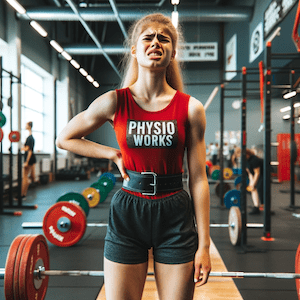

How Can Back Pain Be Treated?
A variety of treatments can help alleviate back pain, from physiotherapy to targeted exercises. Knowing your options is the first step toward effective relief.
- Best Treatment for Lower Back Pain
Discover the most effective treatments for alleviating lower back pain. Check out the best back treatments. - Physiotherapy for Back Pain
Physiotherapy offers a comprehensive approach to managing and reducing back pain. Learn about physiotherapy options. - Exercises for Back Strength
Strengthening your back through exercise is key to both treatment and prevention. Discover back-strengthening exercises.
What Are the Prevention Tips for Back Pain?
Preventing back pain before it starts is often the best strategy. Incorporating healthy habits into your daily routine can make a world of difference.
- Preventing Back Pain Tips
Simple lifestyle changes can significantly reduce your risk of back pain. Read back pain prevention tips. - Proper Back Posture Guidelines
Maintaining good posture is essential in preventing back pain. Understand proper posture. - Regular Exercise Routines for Back Pain
Consistent exercise can keep your back healthy and pain-free. Find back exercise routines.
When Should You See a Physio or Doctor for Back Pain?
It's important to know when back pain requires professional help. Recognising the signs can lead to more effective treatment and a quicker recovery.
- Severe Back Pain? Causes, Symptoms & Treatment
Identify severe back pain symptoms and the appropriate treatments. Learn about severe back pain. - Warning Signs of Severe Back Conditions
Some back pain signals a more serious condition. Learn when to seek medical attention. Recognise warning signs. - Physiotherapy Consultation for Back Pain: What to Expect?
Understand what happens during a physiotherapy consultation for back pain. What to expect at your physio consultation.
What Can Be Done for Repeated Bouts & Incidental Back Pain?
Recurring back pain can be particularly frustrating. By understanding the underlying causes, you can take steps to manage and prevent future episodes.
- Causes of Recurrent Back Strains
Learn why back strains keep coming back and how to stop them. Explore recurrent back strain causes. - What Causes Repeat Low Back Strains & Sprains?
Repeated low back issues can stem from various factors. Understanding these can help in managing the pain. Find out more about low back strains.
Conclusion
Arming yourself with knowledge about back pain can empower you to make informed decisions about your health. Whether you’re experiencing pain now or want to prevent it in the future, taking proactive steps can make all the difference.


Rochedale - Call 38410277
Book Online: RochedaleSalisbury - Call 32751044
Book Online: SalisburySandgate - Call 32691122
Book Online: SandgateCommon Back Pain FAQs
- Why does back pain occur?
Back pain can occur due to muscle strains, herniated discs, or underlying medical conditions. Identifying the cause is essential for effective treatment. - How can I treat back pain at home?
Mild back pain can often be managed with rest, gentle exercise, and over-the-counter pain relievers. Physiotherapy is recommended for ongoing issues. - What are the best exercises for back pain?
Strengthening exercises like planks, bridges, and gentle stretching can help prevent and reduce back pain. Consult a physiotherapist for personalised advice. - When should I see a doctor for back pain?
Seek medical attention if your back pain is severe, persistent, or accompanied by symptoms like numbness, tingling, or weakness in the legs. - What are the most common causes of lower back pain?
Lower back pain is often caused by poor posture, lifting heavy objects, or sitting for long periods. Muscle imbalances and herniated discs can also be factors. - Can physiotherapy help with back pain?
Yes, physiotherapy can significantly reduce back pain by improving mobility, strengthening muscles, and addressing the root causes of pain.
Related Articles:
- Causes of Lower Back Pain: Discover the common causes and symptoms of lower back pain.
- Best Treatment for Lower Back Pain: Explore the most effective treatment options for lower back pain.
- Physiotherapy for Back Pain: Learn how physiotherapy can provide relief for back pain sufferers.
- Exercises for Back Strength: Strengthen your back with these targeted exercises.
- Preventing Back Pain Tips: Tips on how to prevent back pain before it starts.
- Understanding Herniated Discs: Learn about herniated discs and how they cause back pain.
- Benefits of Back Massage: Explore the therapeutic benefits of back massage.
- Severe Back Pain? Causes, Symptoms & Treatment: Identify and treat severe back pain effectively.
- Proper Back Posture Guidelines: Improve your posture to reduce back pain.
- Walking and Back Pain: Understand the impact of walking on your back health.
- Back Pain - This Mayo article discusses the symptoms, causes, and treatments for back pain.
- Understanding Back Pain - WebMD offers a comprehensive guide to understanding back pain, including treatment options and prevention strategies.
- Back Pain Overview - Healthline provides an overview of back pain, its causes, treatments, and prevention tips.



